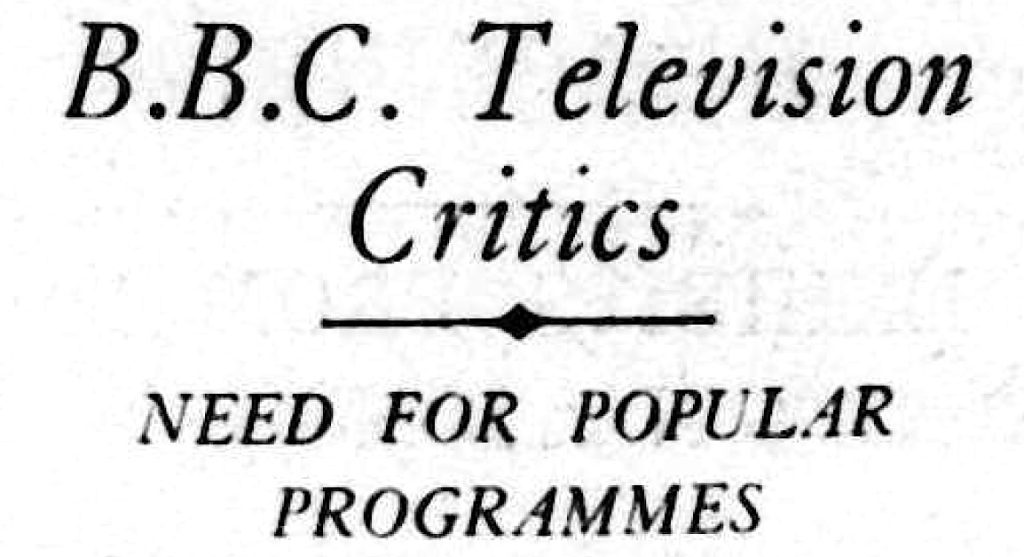OTD in early British television: 2 June 1938

John Wyver writes: Some 18 months after its start, the official BBC Television service from Alexandra Palace was still struggling to attract viewers. On Thursday 2 June 1938, the Daily Telegraph’s well-informed radio correspondent L. Marsland Gander penned a detailed analysis of the challenges facing the Corporation’s new venture. As he wrote:
Judging from the criticisms that reach me, the BBC is still failing to please its television audience with any consistency. I think there may be a two-fold reason for this.
In the first place, although only two or 2 1/2 hours of transmission are given daily, the BBC is attempting to squeeze in items to appeal to all tastes. Secondly, the BBC programmes are so often built on more earnest and less popular lines than the typical cinema bill.
As an alternative to the impossible effort to please everybody, I suggest that it would be better to seek a common denominator and cater for the majority.
The critic pointed to the evening schedule on the previous Sunday, which offered Manuel de Falla’s opera Master Peter’s Puppet Show, performed mostly by, well, puppets in a production by the avowedly intellectual Dallas Bower, and Fred O’Donovan’s presentation of J.M. Synge’s desperately down-beat drama Riders to the Sea. Gander continued:
The first production demanded the closest application from the viewer, and even then was not easy to follow. The second play, a little masterpiece in its way, nevertheless plumbed fathomless depths of gloom and human misery.
I cannot believe that the average house-holder relishes the idea of paying £60 for a television receiver first to be perplexed and then depressed beyond words in the same evening.
Association of these two productions in one programme [that is, scheduling block] was a mistake, and to supplement them with an indifferent cartoon film and a repeated news reel did not help. In any case, neither show could be called popular entertainment.
Gander made a plea for more popular programmes, arguing that
Later, when there are longer hours of transmission, the cultural programme can have its fair share of attention.
After all, AP had shown time and again that it could offer fare that viewers actually appreciated, including outside broadcasts of sporting and national events, the perennial Picture Page, and successful plays like Journey’s End and Once in a Lifetime.
Prodded in part by struggling set manufacturers complaining through the Television Advisory Committee, director of television Gerald Cock and colleagues were well aware of the force of Gander’s criticisms. One response was to increase the number of plays, with more comedies and thrillers in the mix, and another was to enhance the variety broadcasts.
AP also committed to finding out, on a moderately more systematic way than before, what viewers thought about the service and what kinds of television they actually liked. The number of sets in use in the summer of 1938 was perhaps 5,000 in total, but sales began to pick up significantly after Radiolympia in September.
[OTD post no. 167; part of a long-running series leading up to the publication of my book Magic Rays of Light: The Early Years of Television in Britain in January 2026.]
Leave a Reply